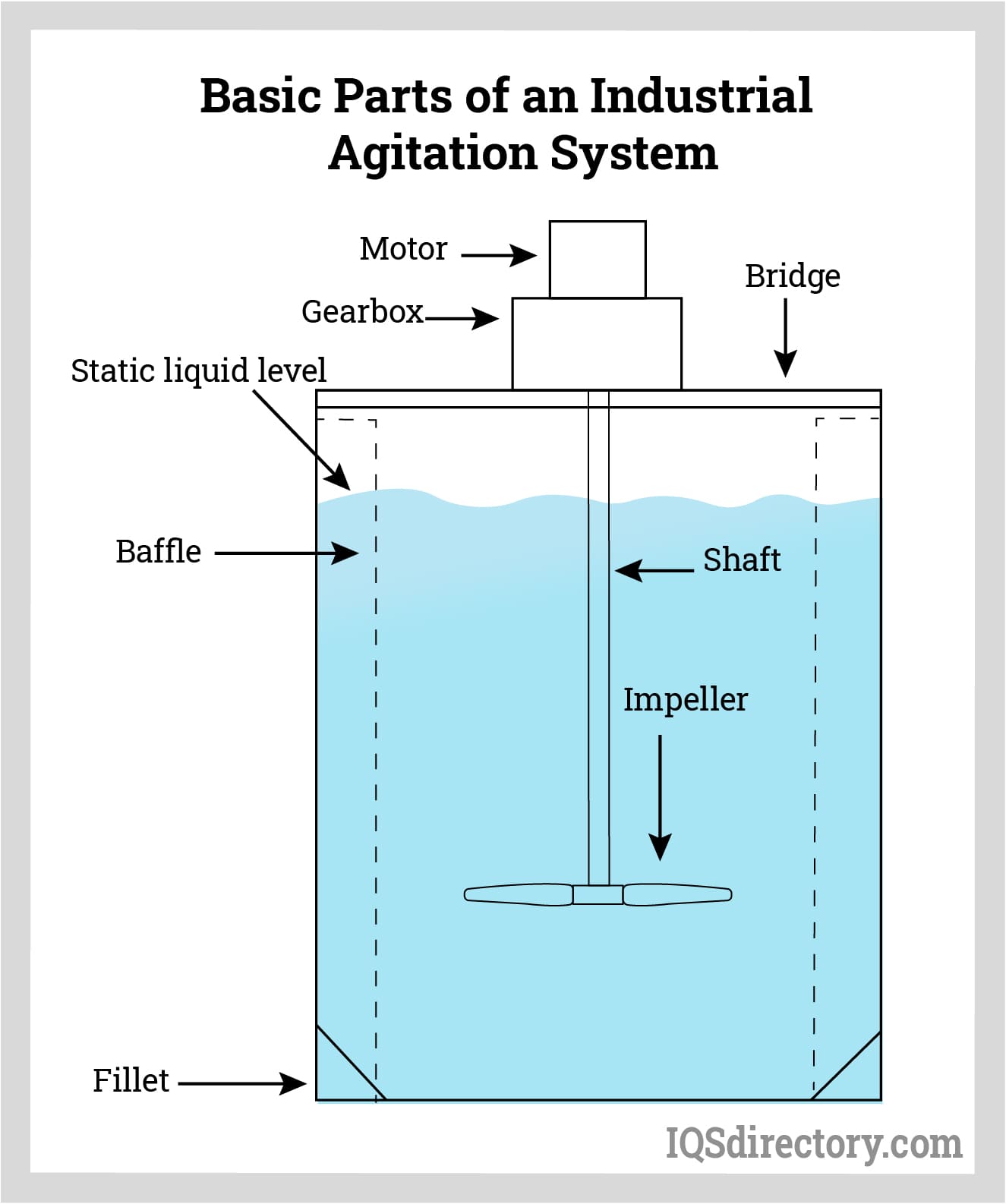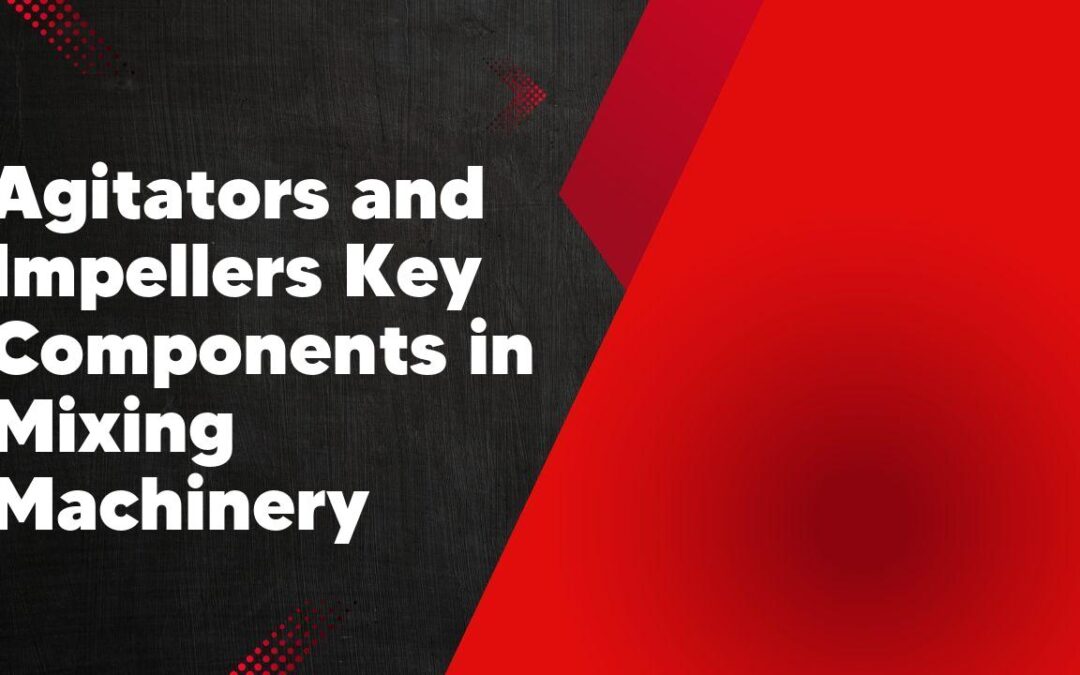Agitators and impellers play a crucial role in various industries, particularly in the field of mixing machinery. These key components are responsible for creating the necessary movement and agitation needed for efficient mixing of liquids, powders, and other materials. Understanding the different types and functions of agitators and impellers is essential for optimizing the performance and effectiveness of mixing machinery in different applications.
1. Understanding the Role of Agitators in Mixing Machinery
As a professional in the field of mixing machinery, I have always been fascinated by the crucial role played by agitators in this industry. Agitators are essential components that ensure effective mixing and blending of materials, making them integral to the success of many manufacturing processes. These devices not only facilitate the uniform distribution of particles but also help in maintaining the desired consistency and quality of the end product. Agitators come in various forms, such as paddle, anchor, propeller, and turbine, each designed to cater to specific mixing requirements. Understanding the functions and characteristics of different types of agitators is paramount for optimizing the efficiency and performance of mixing machinery.
2. The Importance of Impellers in Efficient Mixing Processes

Mixing processes are essential in many industries, and one crucial component that contributes to efficient mixing is the impeller. As a professional in this field, I understand the significance of impellers and their impact on the overall performance of mixing systems. Impellers play a vital role in producing effective and homogeneous mixtures by creating fluid flow patterns that promote thorough blending of various substances. Additionally, impellers help in enhancing mass and heat transfer, resulting in improved product quality and reduced processing time. The choice of the right impeller design and material is paramount to achieve optimal mixing efficiency. Understanding the importance of impellers is crucial for individuals working in industries that rely on mixing processes for their operations.
3. Types of Agitators: Choosing the Right Design for Your Mixing Needs
When it comes to choosing the right agitator design for your mixing needs, there are several types to consider. The first type is the paddle agitator, which is commonly used for low-viscosity materials. It features paddles that rotate in a circular motion, ensuring efficient mixing. Another popular design is the propeller agitator, which is suitable for high-viscosity materials. It works by creating a shearing effect, breaking down any lumps or clumps. If you are working with highly abrasive materials, the turbine agitator is the ideal choice. It is designed to withstand the wear and tear caused by these materials. Additionally, if you require gentle mixing without disturbing any settled solids, the anchor agitator is the most appropriate option. Overall, selecting the right agitator design will greatly enhance the efficiency and effectiveness of your mixing operations.
4. Exploring Different Impeller Configurations for Optimal Mixing Performance
In my research on optimal mixing performance, I have been exploring different impeller configurations. The impeller plays a crucial role in the mixing process, as it is responsible for generating the necessary flow patterns and promoting efficient mixing. By testing various impeller designs, I aim to understand how different configurations affect the mixing efficiency and ultimately identify the most suitable one. This research is important as it has direct applications in industries such as chemical, pharmaceutical, and food processing, where effective mixing is vital for achieving desired product qualities. With a focus on improving mixing performance, I hope to contribute to the development of more efficient and sustainable processes in these industries.
5. Factors to Consider When Selecting Agitators and Impellers for Mixing Machinery
When it comes to selecting agitators and impellers for mixing machinery, there are several factors that I consider. Firstly, I look at the viscosity of the liquid being mixed. This helps me determine the type and size of agitator or impeller that would be most suitable. Additionally, I consider the desired mixing intensity and the specific goals of the mixing process. This could range from gentle mixing to aggressive agitation, depending on the requirements of the application. Furthermore, I take into account the tank size and shape, as well as any space limitations or restrictions. This helps me ensure that the chosen agitator or impeller will fit properly and function effectively. Finally, I also consider the material of construction, as well as the maintenance and cleaning requirements. This ensures that the selected agitator or impeller will be durable, easy to maintain, and suitable for the intended use. Overall, these factors are crucial in making an informed decision when selecting agitators and impellers for mixing machinery.
6. Maintaining and Troubleshooting Agitators and Impellers in Mixing Applications
In my experience, maintaining and troubleshooting agitators and impellers in mixing applications can be quite challenging. These components play a crucial role in ensuring efficient mixing of liquids, and any malfunction can result in subpar results. When it comes to maintenance, regular inspections and cleaning are essential to prevent build-up and ensure optimal performance. Troubleshooting can be a bit trickier, as it involves identifying the root cause of any issues and finding suitable solutions. This often requires a deep understanding of the equipment and its operating parameters. However, with proper training and experience, I have learned how to handle these challenges effectively and ensure smooth operations in mixing applications.
Conclusion
In conclusion, agitators and impellers play a crucial role in the efficiency and effectiveness of mixing machinery. They help to create uniformity and consistency in the mixing process, ensuring that all ingredients or substances are thoroughly blended. Choosing the right type of agitator or impeller for a specific application is essential to achieve optimal mixing results.
What are agitators?
Agitators are components in mixing machinery that are used to mix, blend, and homogenize liquids, suspensions, and other materials.
What are impellers?
Impellers are rotating components in mixing machinery that are designed to generate fluid flow and promote mixing within a vessel or tank.
What is the purpose of agitators and impellers in mixing machinery?
The main purpose of agitators and impellers in mixing machinery is to enhance the efficiency of mixing processes by creating turbulent flow patterns and improving mass transfer rates.
What are the key features to consider when selecting agitators and impellers?
When selecting agitators and impellers, it is important to consider factors such as the mixing application, viscosity of the materials being mixed, desired mixing intensity, tank or vessel design, and the power and speed requirements of the mixing machinery.
What are some common types of agitators and impellers used in mixing machinery?
Common types of agitators include paddle agitators, anchor agitators, turbine agitators, and propeller agitators. Common types of impellers include radial flow impellers, axial flow impellers, and tangential flow impellers.
Do agitators and impellers require maintenance?
Yes, agitators and impellers require regular maintenance to ensure optimal performance. This can include cleaning, lubrication, and inspection of the components to identify any wear or damage that may affect their efficiency or longevity.
